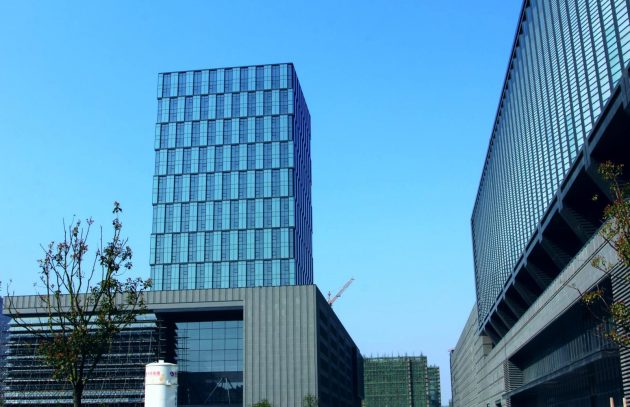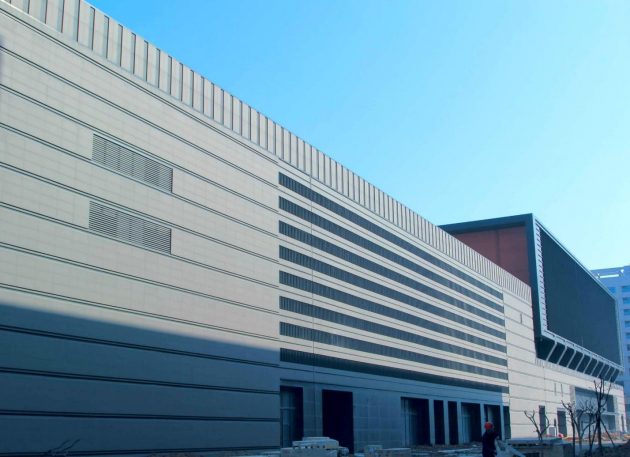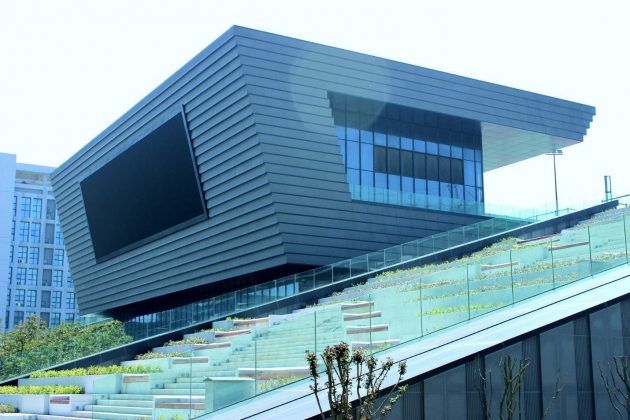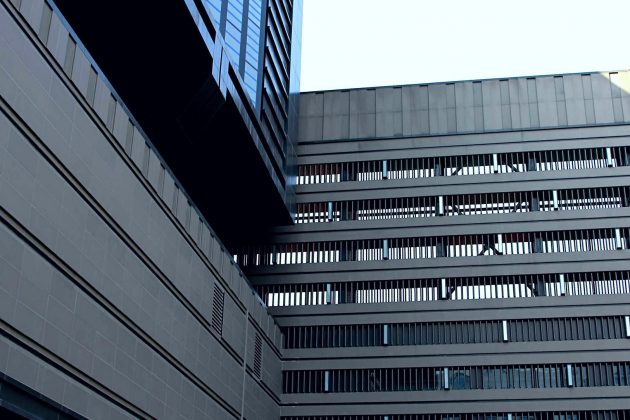
Worldwide urban architecture was enriched this year with the construction of the National Fitness Center of Zhoushan in Zhejiang, China. The large scale building can be considered today a staple of modernity and eco-friendliness. Meant to host sports events, fitness venues, exhibitions, shopping and leisure venues, the National Fitness Center of Zhoushan is an example of good practices when it comes to contemporary architecture.
One of the most important national values of China is health and well-being, fitness, sports and body-mind balance. With this purpose in mind, the architects offered a large scale building which can be used as a model of versatility, functionality and sustainability.
China, like many other countries, is also focused on lowering carbon emissions and finding durable ways to achieve energy conservation and environmental protection. And when it comes to the National Fitness Center of Zhoushan, these desiderates have been all met and surpassed.
The national fitness center features terracotta rainscreen and terracotta baguettes installed on the exterior of the building, following the principles of green construction and energy saving. Terracotta is a natural material that is fully recyclable, not needing grout, sealants or maintenance.
While architects are used to emphasize the beauty and durability of terracotta roof tiles, the use of terracotta facades is becoming more and more popular all over the world.
Terracotta rainscreen and baguettes are fire-proof and offer excellent sound and thermal insulation. By preventing water to be drawn into the building (as terracotta rainscreens allow air to circulate behind the panels), the use of terracotta can increase a building’s insulation by 50%. As a result, the comfort of the occupants is unparalleled and the energy savings are significant.
These products are some of the most versatile materials when it comes to finishing exterior walls. Featuring numerous colors and hues (sand, brown, red, pearl white, pink, silver, iron and so on), terracotta rainscreens and baguettes appeal to architects worldwide.
Besides the material’s durability and resilience to the harshest weather conditions, seismic, thermal, normal movement and positive / negative wind loads, terracotta doesn’t lose its coloration. This means that buildings featuring terracotta products will stand the test of time and look as bright and new for decades. Moreover, apart from the long-term economic and environmental advantages of terracotta products, the building will be faced with low life cycle costs in comparison to less expensive alternatives.
Terracotta, being natural, also eliminates the risks of mold and mildew, thus contributing to lower the costs associated with maintenance. The natural ventilation provided by the terracotta products prevents mold or mildew to develop, since there is no condensation to be trapped inside the wall.
As efficiency was the main concern when designing the building, the use of terracotta rainscreens and baguettes offers added value to the entire building: terracotta products don’t fade in color or texture, are resistant to frost, corrosion, salt water and other aggressive elements.
As designs goes, the architects chose a gray nuance for the National Fitness Center of Zhoushan for the exterior walls. However, they also inserted a small area of red terracotta panels to break the uniformity of the design and create a focal point.

The gray and red blend makes the entire building look full of life. As color theory is concerned, the mix of gray and red in a color scheme adds visual interest to the building, creating extra emphasis on the respective wall. Red and gray hues offer a general sensation of sophisticated elegance in a demure yet joyful manner. Red also symbolizes prosperity and good fortune in the Chinese culture, a color said to be able to attract happiness. The gray nuances were chosen as symbols of humbleness, elegance, modesty and inclusiveness.
However, it was not only color, but also texture and size the architects had in mind when finishing the building. The center features an intriguing blend of vertical and horizontal installations as well, following the principles of minimalism and linearity.
Terracotta panels are favored by architects due to the wide palette of surfaces and textures they provide: natural plain textures, groove textures or glazed surfaces. The National Fitness Center of Zhoushan features a mixture of natural flat panels and grooved panels on the walls’ sides.
The various sizes and textures of the LOPO terracotta products give the structure a profound aura of vitality, doubled by the mixture of light red panels and dark red panels. This linear, stereoscopic design makes the center stand out by offering it not only color and contrast, but also texture and depth. The adding of customized panels in special shapes makes the wall look intriguing.
In regard to the terracotta baguettes, the square ones and the louver make an exquisite match with the panels as the exterior walls show the great effects of ventilation and sunshading.
Terracotta products are probably some of the most versatile and durable materials used in modern architecture, having the added benefit of high sustainability. The amazing National Fitness Center of Zhoushan is the epitome of high-end architecture perfectly combined with ecological awareness principles and green energy national policies.
















